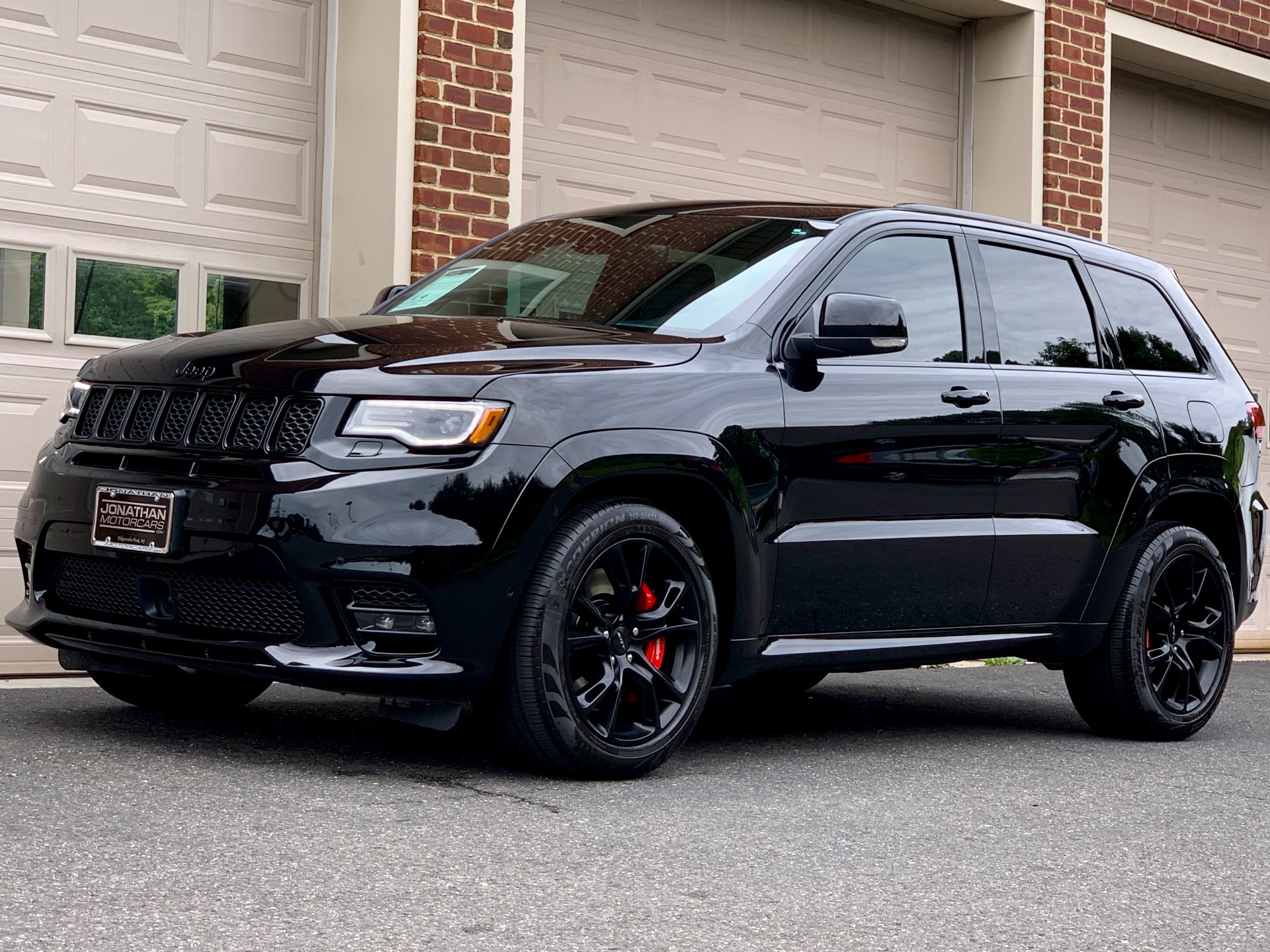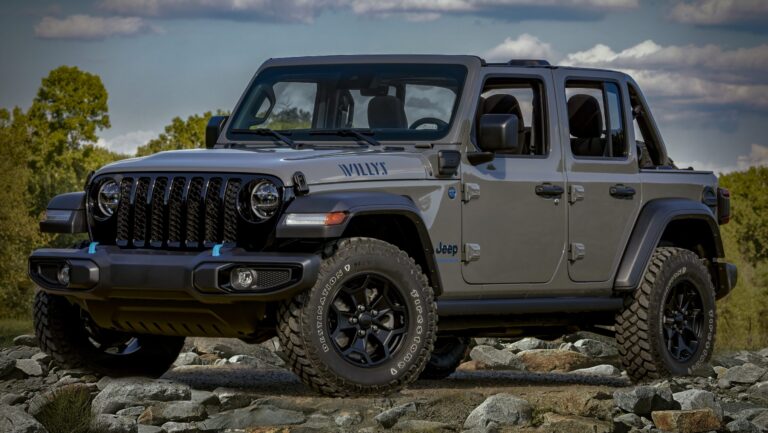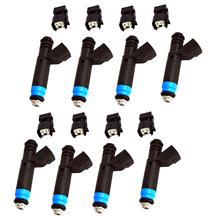The Unbridled Power: A Deep Dive into the Jeep Grand Cherokee SRT
The Unbridled Power: A Deep Dive into the Jeep Grand Cherokee SRT jeeps.truckstrend.com
In the realm of sport utility vehicles, few names evoke the same blend of rugged capability and raw, unadulterated power as "Jeep." But when you append the legendary "SRT" (Street & Racing Technology) moniker, you transcend the ordinary, entering a territory where utility meets muscle car ferocity. This article delves deep into the Jeep Grand Cherokee SRT, a high-performance SUV that defied conventions, offering a unique proposition for those who demand both exhilarating speed and practical versatility.
It’s crucial to clarify from the outset: the high-performance SRT variant was built exclusively on the Jeep Grand Cherokee platform, not the smaller, standard Jeep Cherokee. The Grand Cherokee SRT represents the pinnacle of Jeep’s on-road performance aspirations, designed not for rock crawling, but for asphalt-shredding, track-day thrills, and a commanding presence wherever it goes. It’s a vehicle that unapologetically blends the utility of an SUV with the heart and soul of a true American muscle car.
The Unbridled Power: A Deep Dive into the Jeep Grand Cherokee SRT
A Legacy of Power: The SRT Division and Its Roots
The SRT division of Chrysler (now Stellantis) was established to create high-performance versions of various Dodge, Chrysler, and Jeep vehicles. Their philosophy was simple: take an already capable vehicle and imbue it with extreme power, upgraded chassis dynamics, and aggressive styling. The first Jeep Grand Cherokee SRT, known as the WK1 generation, debuted in 2006, instantly establishing a new benchmark for performance SUVs with its mighty 6.1-liter HEMI V8.
The second generation, the WK2, launched in 2012, significantly refined the formula. It matured into a more sophisticated, technologically advanced, and even more powerful beast, equipped with the larger 6.4-liter HEMI. This iteration cemented the Grand Cherokee SRT’s reputation as a formidable contender against European performance SUVs, offering a distinctive American character and immense value for money.
The Heart of the Beast: Engine, Drivetrain, and Performance
At the core of the Jeep Grand Cherokee SRT’s allure is its engine. For the WK2 generation (2012-2020 before the Trackhawk largely took over as the top trim), this was primarily the naturally aspirated 6.4-liter (392 cubic inch) HEMI V8 engine. This powerhouse delivered:
- Horsepower: Around 470-475 hp (depending on model year).
- Torque: Approximately 465 lb-ft.

These figures allowed the Grand Cherokee SRT to achieve astonishing performance for an SUV of its size:
- 0-60 mph: In the low 4-second range (typically 4.4-4.8 seconds).
- Quarter-mile: Mid-13 second range.
- Top Speed: Electronically limited to around 160 mph.
Power was routed through a robust ZF 8-speed automatic transmission, known for its smooth shifts and quick response, especially in sportier driving modes. The unique Quadra-Trac Active On-Demand 4WD system was specifically tuned for performance, capable of sending up to 70% of the engine’s torque to the rear wheels for a more rear-wheel-drive feel during spirited driving, or distributing power as needed for optimal traction.
To rein in such immense power, the Grand Cherokee SRT was equipped with high-performance Brembo brakes, featuring large rotors and multi-piston calipers that provided exceptional stopping power and fade resistance, crucial for both road and occasional track use.
Aggressive Aesthetics: Exterior Design and Aerodynamics
The Grand Cherokee SRT’s appearance is a clear declaration of its intent. While retaining the recognizable Grand Cherokee silhouette, every exterior detail is amplified for performance and presence:
- Unique Front Fascia: A redesigned front bumper with larger air intakes and LED daytime running lights provides a more aggressive look and improves engine cooling.
- Performance Hood: Featuring functional heat extractors to dissipate heat from the powerful HEMI engine.
- Wider Fenders and Side Sills: Accommodate larger wheels and tires, contributing to a lower, more planted stance.
- Large Wheels and Performance Tires: Typically 20-inch forged aluminum wheels wrapped in high-performance all-season or summer tires.
- Lowered Stance: The SRT’s suspension is lowered compared to standard Grand Cherokees, reducing the center of gravity for improved handling.
- Dual Exhaust Outlets: Large, polished exhaust tips integrated into the rear diffuser signal the vehicle’s performance capabilities.
These design elements are not just for show; they contribute to the vehicle’s aerodynamics and cooling, ensuring stability at high speeds and optimal performance.
Driver-Focused Luxury: Interior Comfort and Technology
Step inside the Grand Cherokee SRT, and you’re greeted by a cabin that expertly blends performance-oriented features with premium comfort and cutting-edge technology.
- SRT-Specific Seating: Heavily bolstered sport seats, often upholstered in Nappa leather and suede or Alcantara, provide excellent support during aggressive driving while remaining comfortable for long journeys.
- Premium Materials: Carbon fiber trim accents, brushed aluminum, and high-quality soft-touch materials elevate the cabin’s luxurious feel.
- Uconnect Infotainment System: One of the most user-friendly infotainment systems on the market, featuring a large touchscreen, navigation, Apple CarPlay/Android Auto (on later models), and a premium audio system (often Harman Kardon).
- SRT Performance Pages: A standout feature within the Uconnect system, allowing drivers to monitor real-time performance data, including G-forces, horsepower, torque, acceleration timers, and even customize launch control settings.
- Digital Instrument Cluster: A reconfigurable digital display provides vital driving information with SRT-specific graphics.
- Advanced Driver-Assistance Systems: Depending on the model year and trim, features like adaptive cruise control, blind-spot monitoring, rear cross-path detection, and forward collision warning enhance safety and convenience.
The interior of the Grand Cherokee SRT strikes a commendable balance, ensuring that its occupants are comfortable and connected, even as the vehicle delivers a thrilling driving experience.
Mastering the Road: Driving Dynamics and Handling
Despite its substantial weight and SUV stature, the Jeep Grand Cherokee SRT is engineered to handle with surprising agility and confidence, thanks to several key components:
- Adaptive Damping Suspension: Featuring Bilstein adaptive dampers, the suspension continuously adjusts damping rates based on road conditions and driver input. This allows for a comfortable ride in "Auto" mode and a much firmer, more controlled ride in "Sport" or "Track" modes, minimizing body roll.
- Selec-Track System: This sophisticated system allows the driver to choose from multiple driving modes, each tailoring various parameters:
- Auto: Balances performance and comfort for everyday driving.
- Sport: Firms up suspension, sharpens throttle response, and optimizes shift points.
- Track: The most aggressive setting, designed for optimal performance on a racetrack, with maximum stiffness and fastest shifts.
- Snow: Adjusts traction for slippery conditions.
- Tow: Optimizes powertrain for towing heavy loads.
- Performance-Tuned Steering: A quicker steering ratio provides more direct feedback and responsiveness.
While it’s no lightweight sports car, the Grand Cherokee SRT defies its size, exhibiting impressive grip and balance through corners, making it genuinely engaging to drive on spirited roads.
Ownership Considerations: What to Expect
Owning a performance SUV like the Grand Cherokee SRT comes with certain considerations:
- Fuel Economy: This is not its strong suit. With a large HEMI V8, expect EPA ratings in the range of 13-15 MPG combined, and potentially lower in real-world spirited driving. Premium fuel is typically recommended or required.
- Maintenance: Regular maintenance is crucial. Parts like performance tires and Brembo brake pads can be more expensive than those for standard SUVs. Engine oil changes are critical given the high-performance nature of the HEMI.
- Insurance Premiums: Due to its high power output, higher purchase price, and performance capabilities, insurance costs can be higher than for a typical SUV.
- Tire Costs: The large, high-performance tires wear faster, especially with aggressive driving, and are more expensive to replace.
- Target Audience: The Grand Cherokee SRT appeals to buyers who need the practicality of an SUV but refuse to compromise on straight-line speed and a thrilling driving experience. It’s for those who appreciate American V8 muscle in a versatile package.
SRT vs. Trackhawk: A Sibling Rivalry
In 2018, Jeep introduced the Grand Cherokee Trackhawk, which, while visually similar to the SRT, represented a significant leap in performance. The key difference lies under the hood:
- Grand Cherokee SRT: Powered by the naturally aspirated 6.4L HEMI V8 (475 hp).
- Grand Cherokee Trackhawk: Powered by the supercharged 6.2L Hellcat V8 (707 hp).
The Trackhawk effectively became the new king of the hill, offering even more extreme acceleration and top speed. While the SRT remained a formidable performer, the Trackhawk appealed to those seeking the absolute maximum in SUV horsepower. The SRT continued to be sold alongside the Trackhawk, offering a slightly more accessible (though still very high-performance) option.
Practical Advice for Prospective Owners
If you’re considering purchasing a Jeep Grand Cherokee SRT, here’s some actionable advice:
- Buying Used: Since the SRT is no longer sold new, focus on thoroughly inspecting any used models. Check for:
- Maintenance Records: Essential for a performance vehicle. Look for regular oil changes, transmission fluid services, and brake maintenance.
- Tire Wear: Uneven wear can indicate alignment issues or worn suspension components.
- Brakes: Check the condition of rotors and pads; replacement can be costly.
- Engine & Transmission: Listen for any unusual noises, check for leaks. A pre-purchase inspection by a trusted mechanic specializing in performance vehicles or Jeeps is highly recommended.
- Accident History: Get a vehicle history report (CarFax, AutoCheck).
- Regular Maintenance: Adhere strictly to the manufacturer’s recommended service intervals. Use high-quality synthetic oil. Don’t skimp on tire rotations and alignments.
- Tire Selection: Invest in good quality high-performance tires appropriate for your climate. All-season performance tires are a good compromise for most, but dedicated summer tires will offer superior grip in warm weather.
- Responsible Driving: While incredibly capable, respect its power. Practice safe driving habits, especially in challenging weather conditions.
- Modifications: Be cautious with aftermarket modifications, especially those affecting engine performance. While the HEMI is robust, improper tuning can lead to issues.
Conclusion
The Jeep Grand Cherokee SRT carved out a unique and unforgettable niche in the automotive landscape. It masterfully combined the practicality and commanding presence of an SUV with the exhilarating performance of a genuine muscle car. It was, and remains, a testament to American engineering, delivering a visceral driving experience unlike almost any other SUV. For those who crave the roar of a naturally aspirated HEMI V8, the confidence of all-wheel drive, and the versatility of a family-friendly vehicle, the Grand Cherokee SRT stands as a compelling and highly desirable choice. It’s more than just an SUV; it’s a statement of power, passion, and unbridled capability.
Jeep Grand Cherokee SRT Price Table
Given that the Jeep Grand Cherokee SRT (WK2 generation) is no longer sold new, the table below reflects estimated original MSRPs for context and current used market values. Prices will vary significantly based on model year, mileage, condition, optional features, and geographical location.
| Model Year Range | Engine | Original MSRP (Approx.) | Estimated Used Price Range (USD) | Key Features / Notes |
|---|---|---|---|---|
| 2012-2013 | 6.4L HEMI V8 (470 hp) | $55,000 – $60,000 | $18,000 – $28,000 | First WK2 SRTs, 5-speed auto (early), 8-speed (late) |
| 2014-2016 | 6.4L HEMI V8 (475 hp) | $63,000 – $70,000 | $25,000 – $38,000 | ZF 8-speed standard, refreshed interior/exterior |
| 2017-2020 | 6.4L HEMI V8 (475 hp) | $68,000 – $75,000 | $35,000 – $55,000 | Latest models before Trackhawk dominance; refined tech |
Note: The Grand Cherokee SRT was largely superseded by the Trackhawk in terms of top-tier performance from 2018 onwards, but the SRT trim continued to be offered.
Frequently Asked Questions (FAQ)
1. Is the Jeep Grand Cherokee SRT a good daily driver?
Yes, absolutely. Despite its performance capabilities, the Grand Cherokee SRT offers a comfortable ride in its "Auto" mode, a spacious and luxurious interior, and the practicality of an SUV. Its only real drawback for daily driving is its fuel consumption.
2. What’s the real-world fuel economy of the Grand Cherokee SRT?
Expect real-world fuel economy to be around 12-16 MPG combined. Aggressive driving will quickly drop that figure. It’s designed for performance, not fuel efficiency.
3. Can the Grand Cherokee SRT go off-road?
While it’s a Jeep, the Grand Cherokee SRT is specifically engineered for on-road performance. Its lowered suspension, low-profile performance tires, and aggressive aerodynamic bodywork are not suited for serious off-roading. It can handle light gravel roads or snowy conditions thanks to its AWD system, but it’s not designed for rock crawling or deep mud.
4. How reliable is the Grand Cherokee SRT?
The 6.4L HEMI V8 is generally considered a robust and reliable engine when properly maintained. The ZF 8-speed transmission is also highly regarded. Like any high-performance vehicle, consistent and proper maintenance (including regular oil changes with synthetic oil, brake checks, and tire management) is crucial for long-term reliability.
5. What’s the difference between the Grand Cherokee SRT and the Grand Cherokee Trackhawk?
The primary difference is the engine. The SRT features a naturally aspirated 6.4L HEMI V8 (around 475 hp), while the Trackhawk is equipped with a supercharged 6.2L Hellcat V8 (707 hp). The Trackhawk is significantly more powerful and faster, essentially an SRT on steroids.
6. Are parts for the Grand Cherokee SRT expensive?
Some performance-specific parts, such as the Brembo brake components, high-performance tires, and specialized suspension components, can be more expensive than those for standard Grand Cherokees. Regular maintenance items are generally comparable to other premium SUVs.





